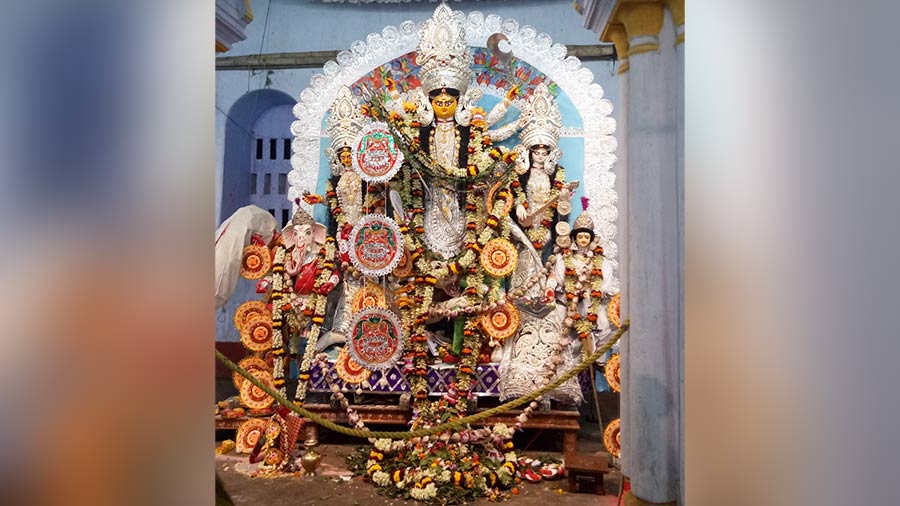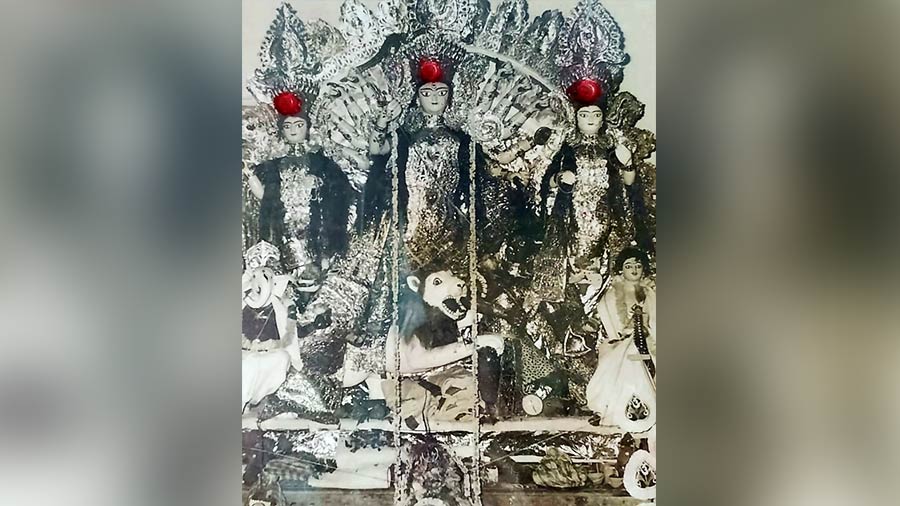Goddess Durga is worshipped here with Shiva as Hara-Gouri along with her children. The Devi is decked in white shola (pith), while the idols are built in the thakur dalan itself without using any mould. Welcome to the 300-year-old Durga Puja of the Kundu Chowdhury family located at Mahiary in Howrah’s Andul.

The Mahiary Kundu Chowdhury mansion
Though the ancestors of the Kundu Chowdhury clan, Kushai Ram alias Kushai Dev, settled in Motihari as early as in 1745, it was only in 1816 that the most famous descendant of the family, Ramakanta Kundu Chowdhury, built the present palatial residence of the family with the Durga dalan along with adjacent two Shiva temples. The family’s origin was from Tamluk in Medinipur. The Durga Puja of the Kundu Chowdhury family is around 300 years old which started much before the Durga dalan was built.

Ramakanta had built a monopoly in the salt importing business of salt from Cheshire in England. He was involved in riverside trading as the presently non-existent Saraswati river was in full flow at that time. He became the most influential zamindar or landlord of the area in no time. It was owing to the fact that male members of the family returned late from voyage that the custom of twin Pujas started from the late 18th century. Women performed Basanti Puja when men were on their way back home and Durga Puja in autumn when they returned safely.

The ‘nouka’ puja
The goddess is worshipped along with Shiva as Hara-Gouri along with her children. The Goddess is decked in white shola (pith). The idols are built in the Thakurdalan itself without using any mold.
The family has faith in Vaishnav culture and ‘Laxmi Janardan’ is their family deity for daily worship. Apart from Durga Puja, Raas festival is also celebrated with pomp and show every year. The expenses of the Puja are met from the ‘Mohiary Kundu Chowdhury Sri Lakshmi Janardhan Jew Estate’. There is a book named 'Puja Arpan Nama' at Kundu Chowdhury residence for different rules of Puja. The Durga Puja conducted strictly as per this book.
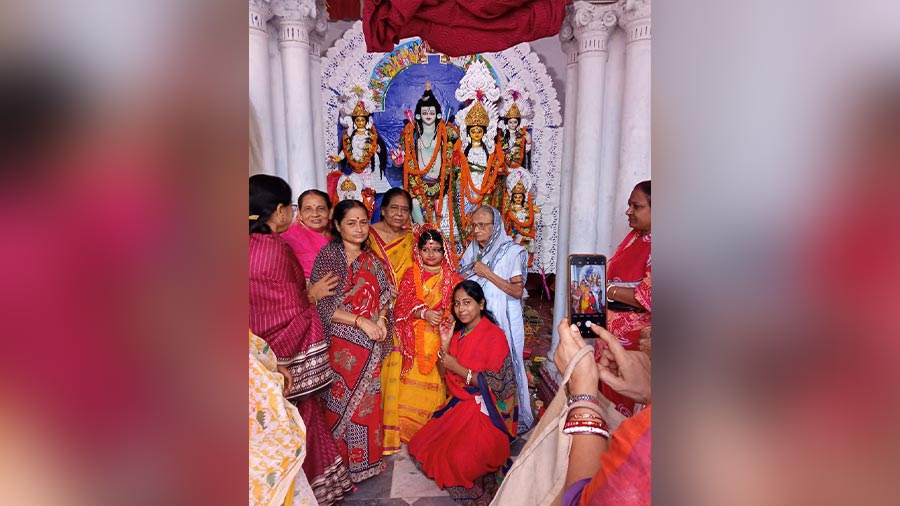
The Kumari Puja is celebrated on all four days of Durga Puja
Although the members have vegetarian food during the Puja, they are allowed to eat fish on Dashami after the idol is being brought down from the thakur dalan. No cooked food is offered to the deity. There is no glamorous sindoor khela in the family. The ladies only put a little vermilion on each other’s forehead after they have completed thakur boron rituals on Dashami.
Kathamo pujo starts on the day of Ulto Rath. From protipod, chandipath or reciting from the book Chandi starts. Bodhon or awakening takes place on Sasthi. There is a bael tree just outside the house, where nabapatrika rituals also take place. Earlier, nabapatrika used to be taken at a ghat of the now non-existent Saraswati river. After the bathing rituals are over, the nabapatrika is draped in a red saree and brought into the thakur dalan.
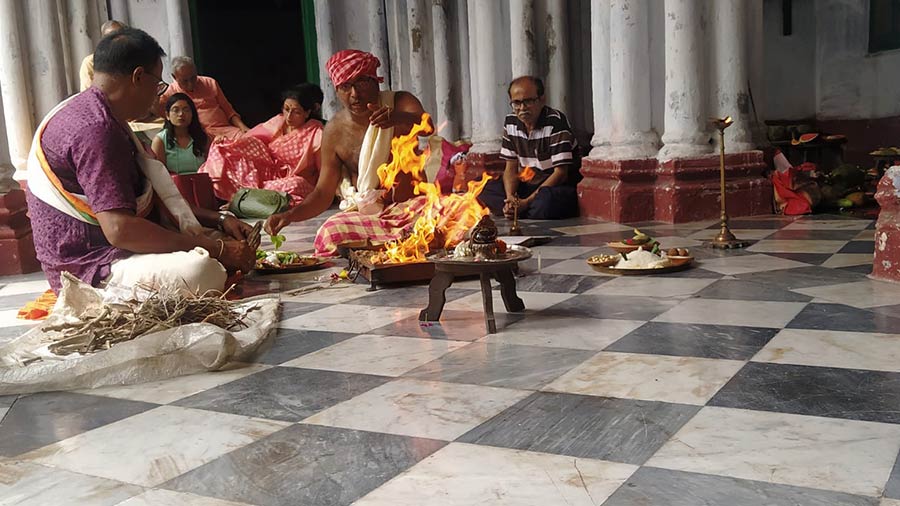
The ‘home yagna’ takes place on Navami
No cooked food is offered to the deity. Naibedya of uncooked rice of around 100kg, various fruits, coconut sweets made from over 100 coconuts are offered to the goddess. In the night, luchi is offered to the goddess along with sweets like gaja, balushai, bonde, pantua.
Since the male members of the family returned late from the voyage, the ritual of ‘boat puja’ or ‘nouko puja’ started on Dashami, to prevent any danger on the waterway. A small wooden boat with a mast is used for this purpose. On Navami itself, the boat is covered with a gamchha with turmeric and sindoor smeared on the cloth. A box made of thin bamboo slices filled with items used in business like coins, cowrie and items like sindoor box are placed inside it. After the puja is conducted on Dashami, the boat is put back to its designated place.
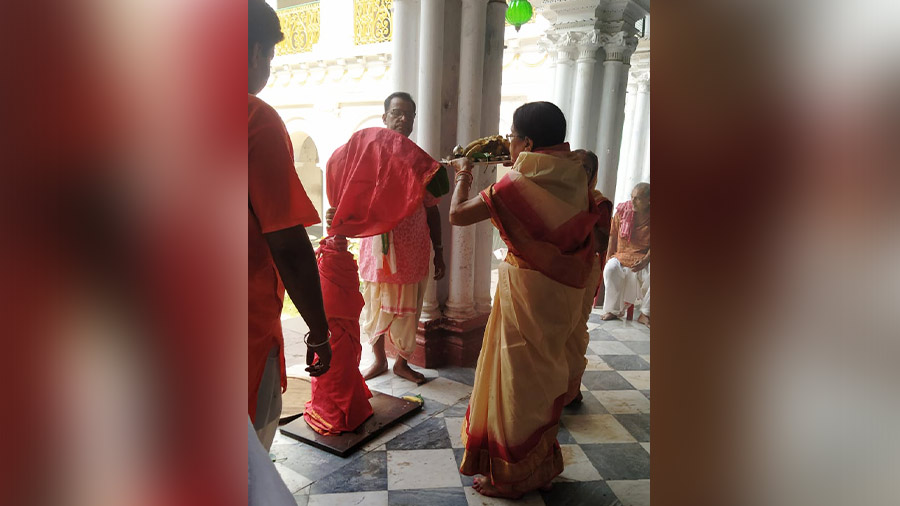
The ‘nabapatrika’ or ‘kola bou’ rituals
Another feature of the puja of this house is that along with Durga Puja, Garuda Puja is also performed here. Garuda sits here on a silver throne next to the goddess. The puja utensils of Garuda are also made of silver.
There is a practice of performing Hari naam sankirtan during one of the days of Durga Puja of the Mahiary Kundu Chowdhury family. On Ashtami, the ritual of dhuno purano is prevalent in the family. Around 10 women sit on the thakur dalan to perform the rituals. Usually, Kumari Puja is performed during Navami in traditional families, but in the Kundu Chowdhury family Kumari Puja is performed for four days from Saptami to Dashami. On Navami, the home yagna of the goddess takes place.
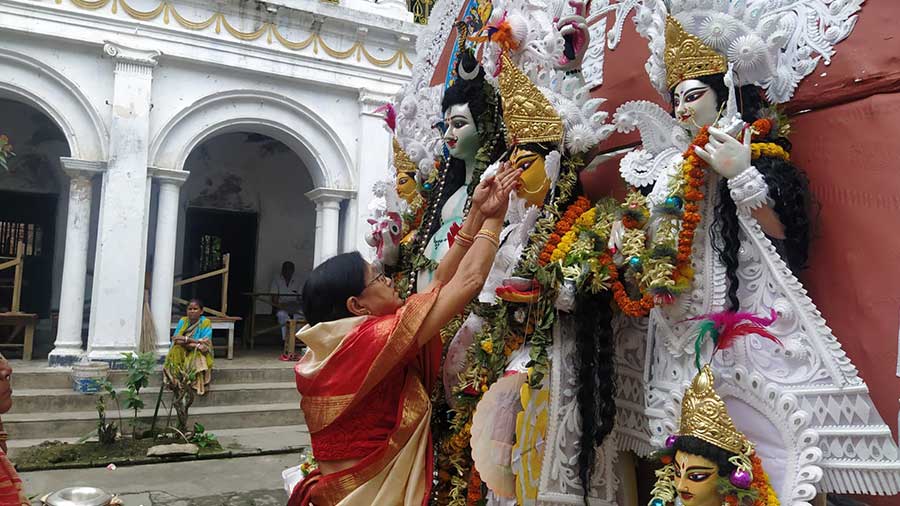
‘Thakur boron’ at the Kundu Chowdhury mansion
During Sandhi Pujo, brass stands and brass lamps are used to light 108 lamps. There is no animal sacrifice in the Kundu Chowdhury Pujo. Only a pomelo (batabi lebu) is sacrificed during Sandhi Puja but not publicly.
The goddess is immersed at the Podrah Ghat on the banks of river Hooghly. The same kathamo is used for both Durga Puja and Basanti Puja.
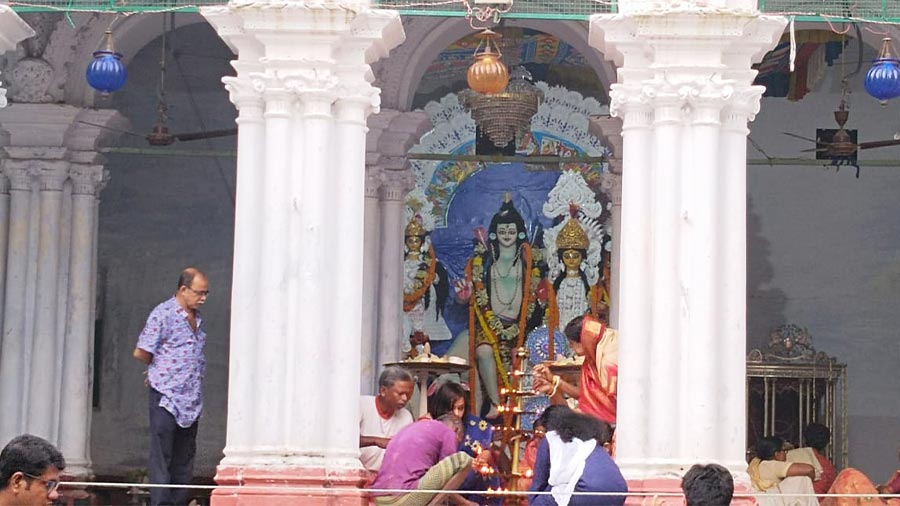
Sandhi Puja

